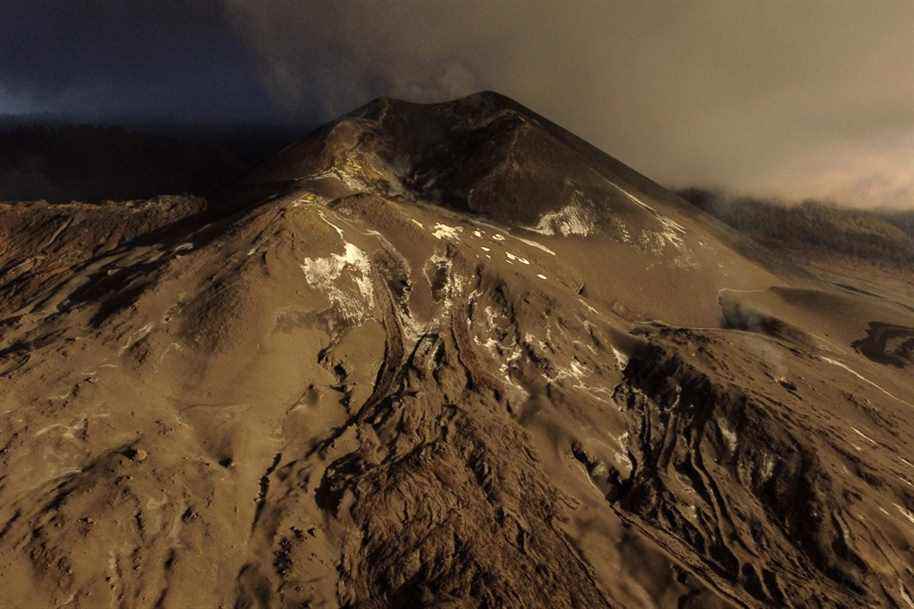(Madrid) It took 85 days for the Cumbre Vieja volcano to fall back to sleep: the eruption on the Spanish island of La Palma, which caused considerable damage, was declared “over” on Saturday, the authorities estimating that it s ‘was arrested on December 13.
“Today the scientific committee can say it […] the eruption is over, ”announced Julio Pérez, director of the Canary Islands Volcanic Emergency Plan (Pevolca) at a press conference on Saturday.
“There is no lava, no significant gas emission, no significant earthquakes,” said the official, recalling that this eruption lasted “85 days and 8 hours” between September 19 until December 13.

PHOTO RAMON DE LA ROCHA, AGENCE FRANCE-PRESSE ARCHIVES
Cumbre Vieja volcano erupting on September 23
It took 10 consecutive days without any clear sign of volcanic activity, a time required according to scientific experts, to be able to say that the episode was over, while the end of the eruption was felt several times, before resuming each time a few days later, to the dismay of the inhabitants of the island.
It is, tweeted the Spanish Prime Minister Pedro Sanchez, “the most beautiful Christmas present […] we will continue to work together, with all the institutions to revive the wonderful island of La Palma and repair the damage caused ”.
Now Cumbre Vieja is in lethargy, its lava torrents are black, frozen, hardened, and a layer of black sand – ash – has settled like a veil over the place.

PHOTO JORGE GUERRERO, AGENCE FRANCE-PRESSE ARCHIVES
Aerial view of houses in Las Manchas buried in lava, December 14
It will take years, if not a decade, to clean up, clear away, rebuild and reclaim this disfigured land.
“The end of the eruption does not mean that there is no more danger”, warned Julio Pérez, adding that “the risks and dangers remain”. There will still be toxic gas emissions and the lava will take a long time to cool. Not to mention the risk of land collapse.
Volcanic activity is inscribed in the history of La Palma, which, like the six other islands of the Canary Archipelago – located in the Atlantic Ocean, off the northwestern coast of Africa – is volcanic origin.
No death
However, it was the longest eruption the island has known and the first in 50 years, after those of the San Juan volcano in 1949 and Teneguia in 1971.
Despite its duration and the impressive images of the molten lava flows, it did not kill anybody, but caused enormous damage: more than 7000 people were evacuated, among whom approximately 500 still live in hotels, and near 3000 buildings were destroyed.

PHOTO DESIREE MARTIN, AGENCE FRANCE-PRESSE ARCHIVES
Cumbre Vieja volcano erupting on September 19
The lava covered 1219 hectares of the area of the island and even … enlarged it: the flows that reached the sea solidified and gave birth to two peninsulas, adding to the area of the island 43.5 hectares in the south and 5 ha in the north, according to data provided on Saturday by local authorities.
At the height of the episode, the volcano spat out thousands of gallons of lava, producing bubbling, fluorescent flows that rolled down the mountain, all in a constant roar.
The 83,000 inhabitants of La Palma will not forget the earthquakes, nor the ash rains, nor the toxic gases or the smoke escaping from the cone of the volcano which forced them to seal themselves sometimes for several days.
The homes had to be evacuated in haste, sometimes coming back to pick up animals and personal effects a few days later.
Sunken villas or buildings, roads disappearing under lava flows and spectacular jets of salt water when the lava entered the sea: the activity of the volcano has punctuated Spanish television news for weeks on end.
Rebuild or leave
Three months of paralysis, with regular air traffic interruptions and the closure of La Palma airport, on this small island heavily dependent on tourism.
The lava has also done a lot of harm to the banana plantations, the other key sector of the local economy, since it accounts for 50% of its GDP.
Of the 70,000 hectares of the island, 10% are devoted to agriculture, mainly to the cultivation of bananas (43%), according to the foundation World Biosphere Reserve of La Palma.
The damage could amount to 900 million euros, local authorities estimated on Saturday.
The Spanish government, whose leader Pedro Sánchez has visited the site on numerous occasions, has pledged 225 million euros in aid intended in particular to build housing and buy basic necessities, as well as to direct subsidies to farmers and fishermen.
Madrid also called on the European Commission to activate the European Union solidarity fund.
